96 Hours in an American Ghost Town
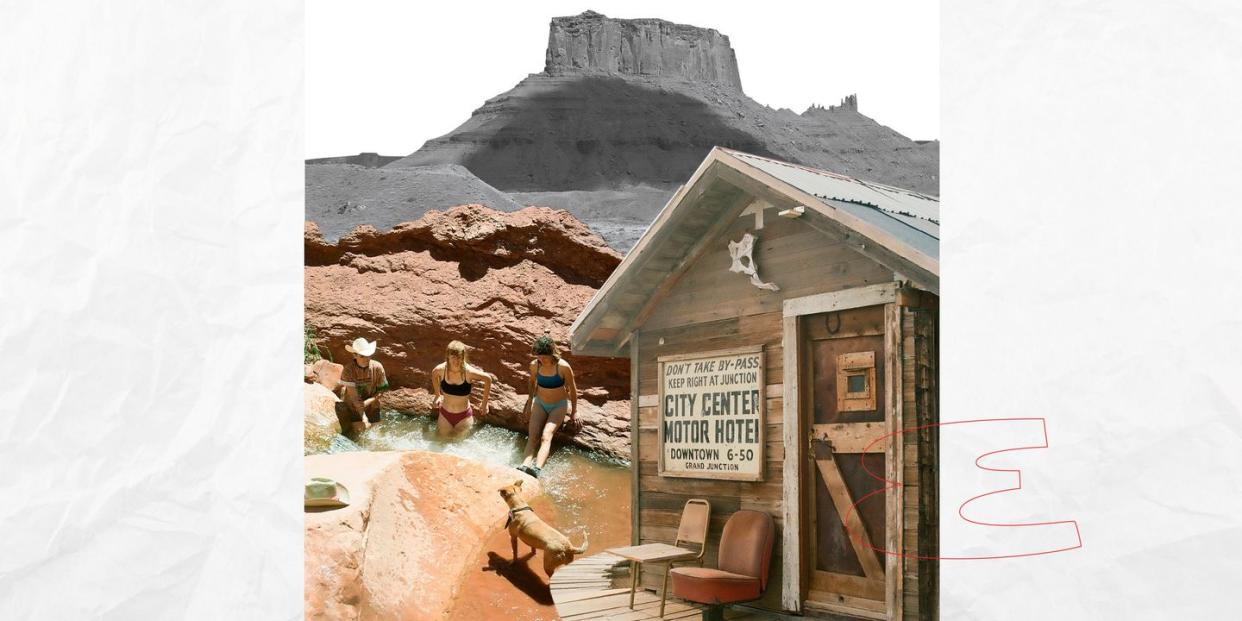
"Hearst Magazines and Yahoo may earn commission or revenue on some items through these links."
I can’t say I’m some sort of interstate superfan—I’m not planning on showing up at HighwayCon cosplaying as a median anytime soon—but it’s just facts that the stretch of I-70 between Denver and Cisco, Utah, is one of the best roads in the country. I first drove this road west over the Rockies back in 2016 on a somewhat aimless trip around Colorado. The interstate climbs up mountains, then winds along the edge of the Colorado River at the bottom of steep valleys. I was driving alone at 80 miles per hour, and the fact that I had no one to share the beauty with made me feel particularly lonely.
My friend Emmy and I drove the same road in the opposite direction in 2018, and now here we were doing it again on our way to Cisco, our friend Eileen’s ghost town.
“Isn’t this road crazy?” I said.
“Dude,” said Emmy. “I know.”
Everyone was building when we arrived. There were J., Eileen’s girlfriend at the time, and Z., a friend from Milwaukee, sawing wood and swinging hammers. There was M., an older man contributing manual labor in exchange for using Eileen’s WiFi to write a novel about his years working at Yellowstone, getting drunk and peeing into Old Faithful. There was Bart, Emmy’s partner, who was helping Eileen build a camper on the back of an abandoned Ford pickup. And looking like the coolest person in the universe in paint-scuffed pants, a tee with a Sharpie hanging from the collar, and a bold pair of glasses was the reason for the season: Eileen.
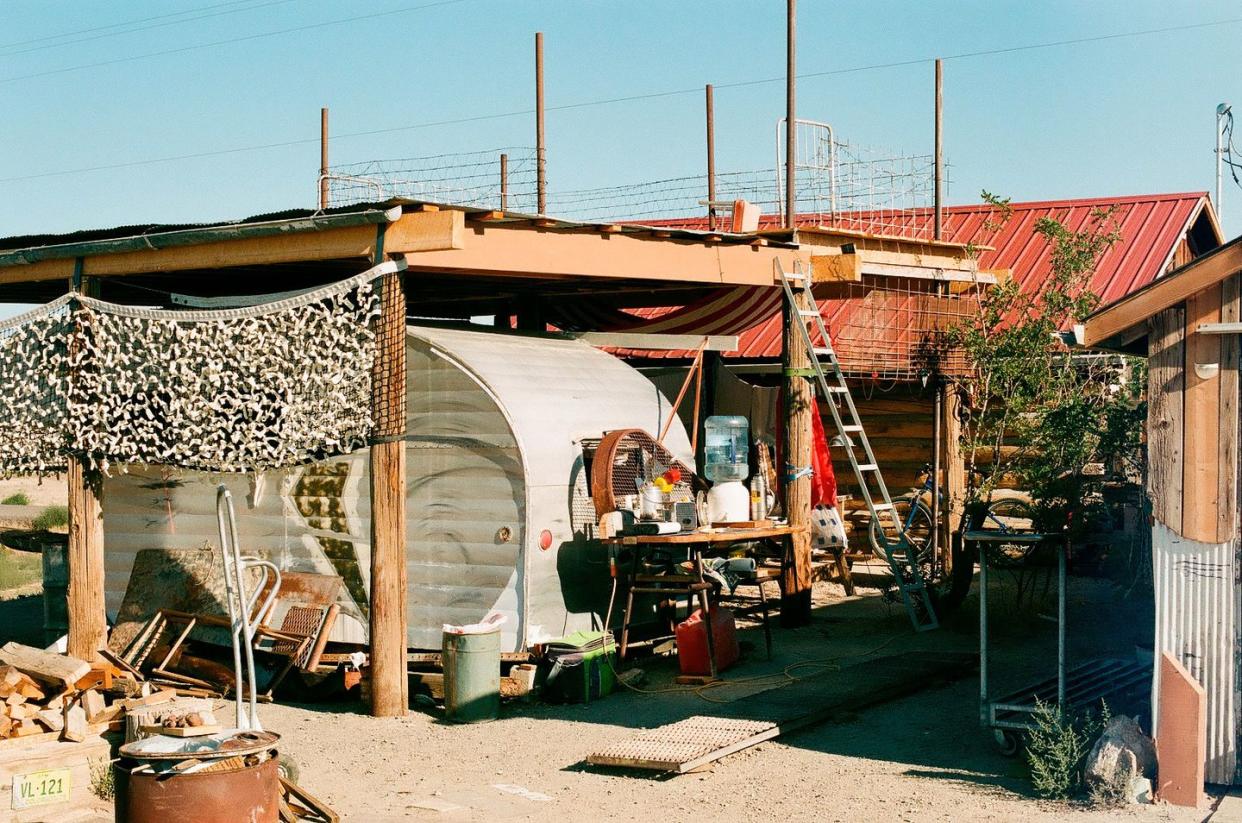
Several years before, Eileen—who is from Milwaukee and uses they/them pronouns—took a trip to Utah to see the Holy Ghost panel of pictographs in Canyonlands National Park. The person sitting next to Eileen on the plane struck up a conversation. She told Eileen that there was a ghost town they should check out on the way to Canyonlands. There are ghost towns all over the American West, but Eileen had never thought to go to one. So when they passed the Cisco exit on I-70, they pulled off to see it.
The town consisted of just a few blocks. Since its founding in the 1880s, Cisco has been a stop for the railroad, a ranching town, an oil town, a uranium town—it burned through industries like a middle schooler burns through identities. At its most booming, around 250 people lived in Cisco. It had a hotel, a saloon, a gas station, restaurants. But eventually the train no longer needed to stop there, and then the interstate was built, bypassing the road that cut through town. Without the traffic, the town began to die. The last permanent resident moved out decades before Eileen drove through.
By then the boomtown wasn’t recognizable. The buildings were collapsed or collapsing or no longer there at all. Only one looked remotely habitable. It was covered in trash or, depending on how you look at it, “interesting historical artifacts.” Eileen did some math: If they bought the land and sublet their apartment for the winter, they would actually be saving money. So they did.
Once all the power tools were turned off, Eileen took Emmy and me around town. It had been three years since Eileen moved to Cisco full-time. During that time, they had been rebuilding the town using mostly scavenged materials. First Eileen took us to their log cabin, the sturdyish-looking building that had inspired them to buy the property in the first place. Eileen had cleared it of rubbish and mouse poop, ripped the faux-wood and plaster walls down to the logs, then mortared the gaps.
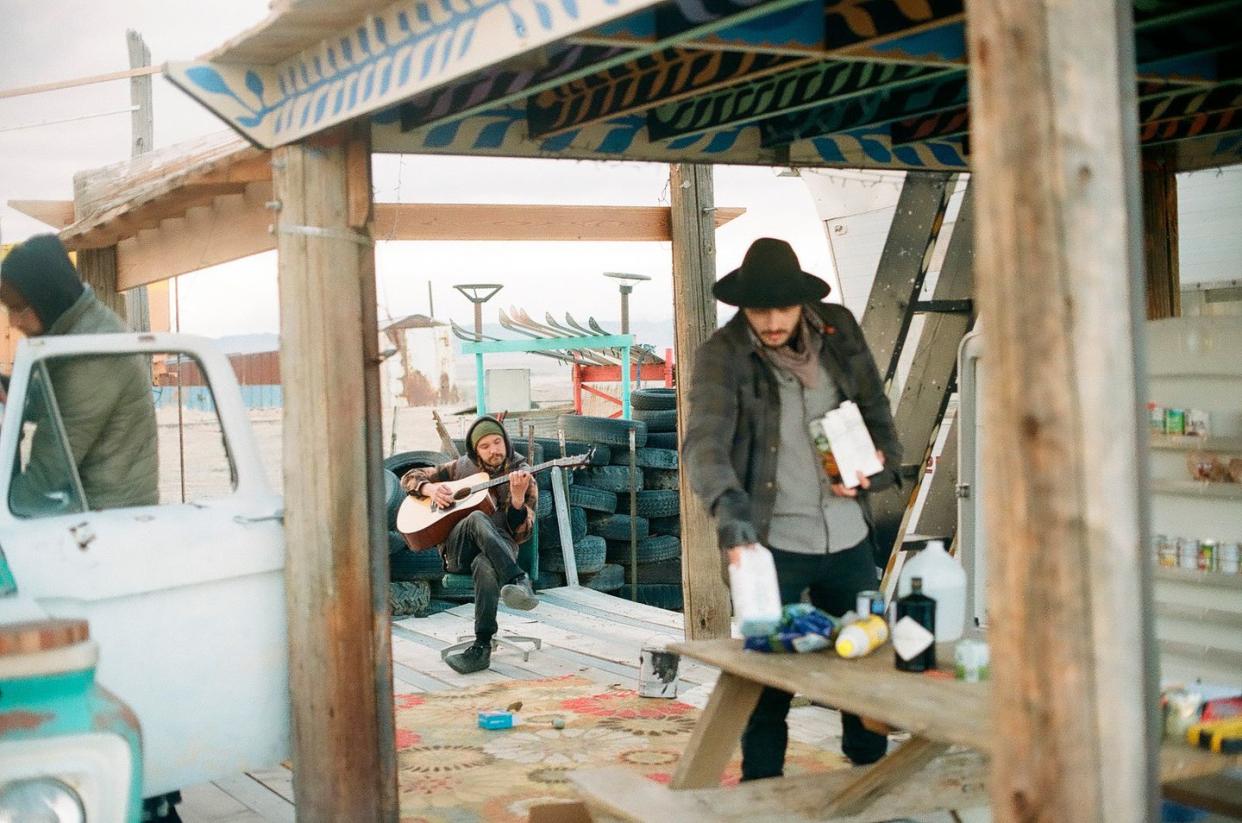
Before buying Cisco, Eileen had never built a house and had never worked in construction. The most experience they had in “constructing a ghost town out of a pile of garbage” was when, in their mid-twenties, they had helped their mom demolish a completely gross kitchen; later, they learned how to do drywall, insulation, and plumbing.
We crossed the street and walked along the wooden walkway Eileen had built for the rainy season, when the dirt town became one big mud puddle. Emmy dropped her bags in an abandoned bus Eileen had turned into a bedroom. Since I’d last been in town, Eileen’s friend Nick had painted two murals on the bus: on one side, a man herding sheep across the desert, and on the other, a gunfight featuring Eileen’s actual gun.
After Eileen bought the town, Cisco became a place conducive to art. Nick had some mural mockups he needed to get done and, as he reported to Eileen, he found Cisco was the perfect place to do them, because there was literally nothing else for him to do. It got Eileen thinking: They didn’t want to be out in Cisco all alone, both for safety reasons and because life is just better when you’re surrounded by creative people. “There’s no meaning for me anyway in restoring old buildings and then just looking at them,” they told me. With the help of their sisters, Eileen was in the process of creating an artist residency in Cisco. The only problem was that the ghost town didn’t actually have anywhere for an artist to reside.
So Bart had driven across the country to build a residence in the form of a wooden camper on the back of a turquoise pickup rusting away on Eileen’s land. When Emmy and I showed up, he had built the main structure, an elegant wooden jewel box with a pointed arch roof and windows torn off an RV abandoned across town. Twenty feet away, Eileen had begun to restore an old Winnebago that would eventually be used as an artist studio. I looked around, wanting to help but terrified of nailing the wrong thing to the wrong other thing and irrevocably fucking things up.
“Ugh, it’s too hot to work right now,” Eileen said, which is why I love them.
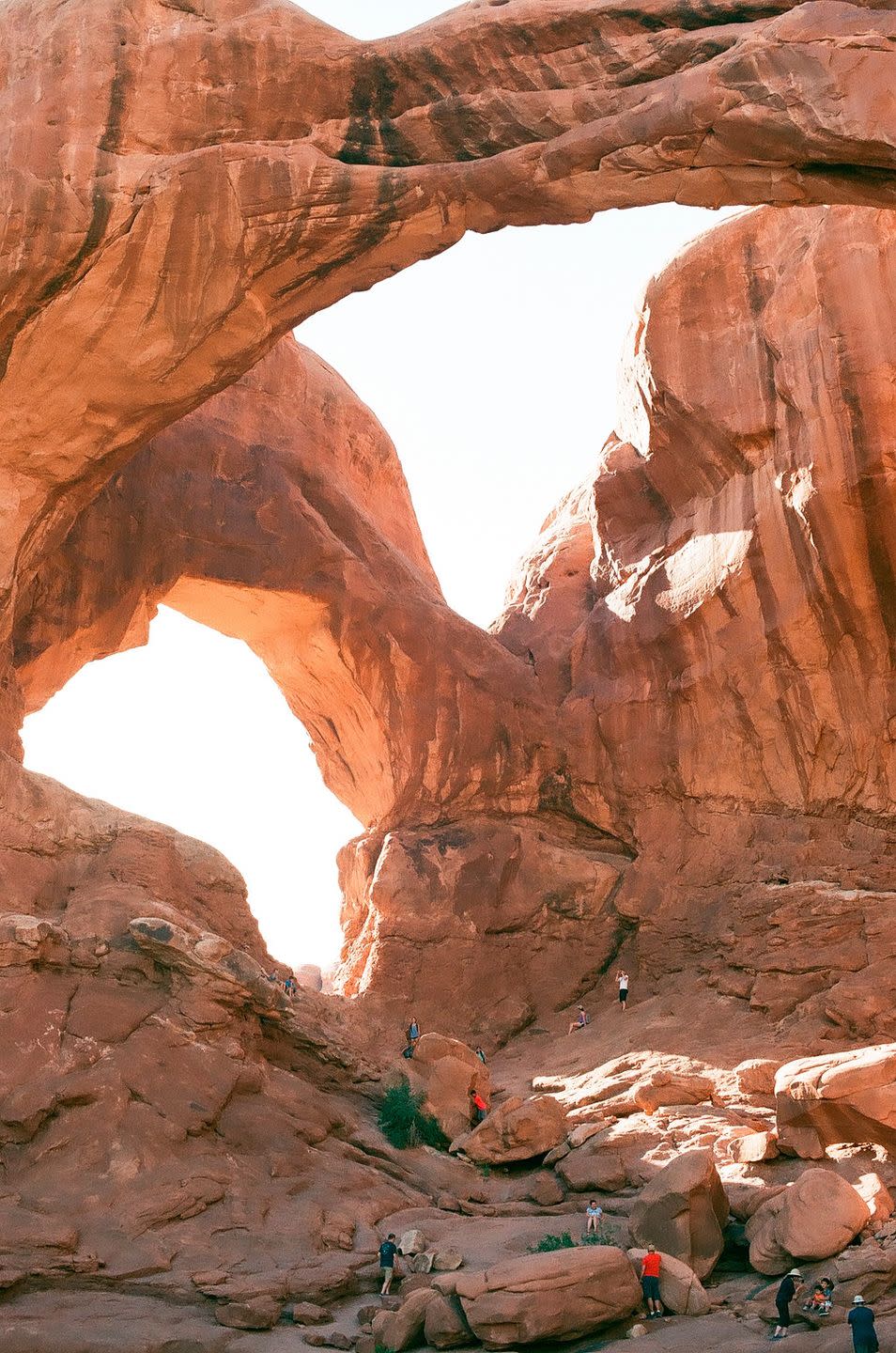
At a certain point in the day when it’s summer and you’re in the desert, it gets too hot and too windy to work. So a bunch of us decided to visit Arches National Park. Eileen stayed behind but suggested we skip the interstate and drive there on Highway 128.
Listen, I know I already said this about I-70, but Highway 128 from Cisco to Moab might be the most beautiful road in the country. For miles you cruise along the Colorado River with free-roaming cows hanging out on the side of the road as if speeding hunks of metal pose absolutely no risk to them. After about fifteen minutes, the river begins to weave through canyons of the red rock Utah is famous for. Far in the distance, poking above the red mesas, are the snowy La Sal Mountains. Many people drive about two miles per hour on this road, presumably because they’re trying to take in the view, and also because the edge is at times perilously close to the drop-off to the river, with no guardrail to save you. To cut down on “dragging vintage Volkswagens out of the Colorado” costs, there are pullouts along the way. We stopped at one to take photos, Emmy on Bart’s shoulders in front of the desert, red cliffs, and mountains.
Arches National Park is exactly what it says on the box. It’s named after the natural stone arches found all around the park; there are two thousand in Arches alone, making it the densest concentration of such formations on the planet. We took the main road far into the park, looking for somewhere to hike a little off the beaten path. The windows were down, our hair blowing in the warm wind, the desert desolate and open all around us.
We applied our sunscreen and took off. Staying on the trail is important no matter where you’re hiking, but in Arches it’s especially urgent because much of the ground is covered in crypto-biotic soil. Also known as “living soil” or, in my opinion, “freaky dirt,” this soil is what makes possible any of the plant life we see in the desert. Living soil allows the desert to absorb rain and to, very simply, not blow away. It can take more than a hundred years to grow back after being damaged—you can still see places in this country where pioneers’ wagons rolled over it in the 1800s—which means that when you’ve got a bunch of hikers (or, more likely, cows) stomping all over the place, you’ve got a lot of soil in danger of blowing away. Perhaps you remember the Dust Bowl, of “dirt catastrophically blowing all over the place” fame? Well, guess what: Cows did the Dust Bowl.
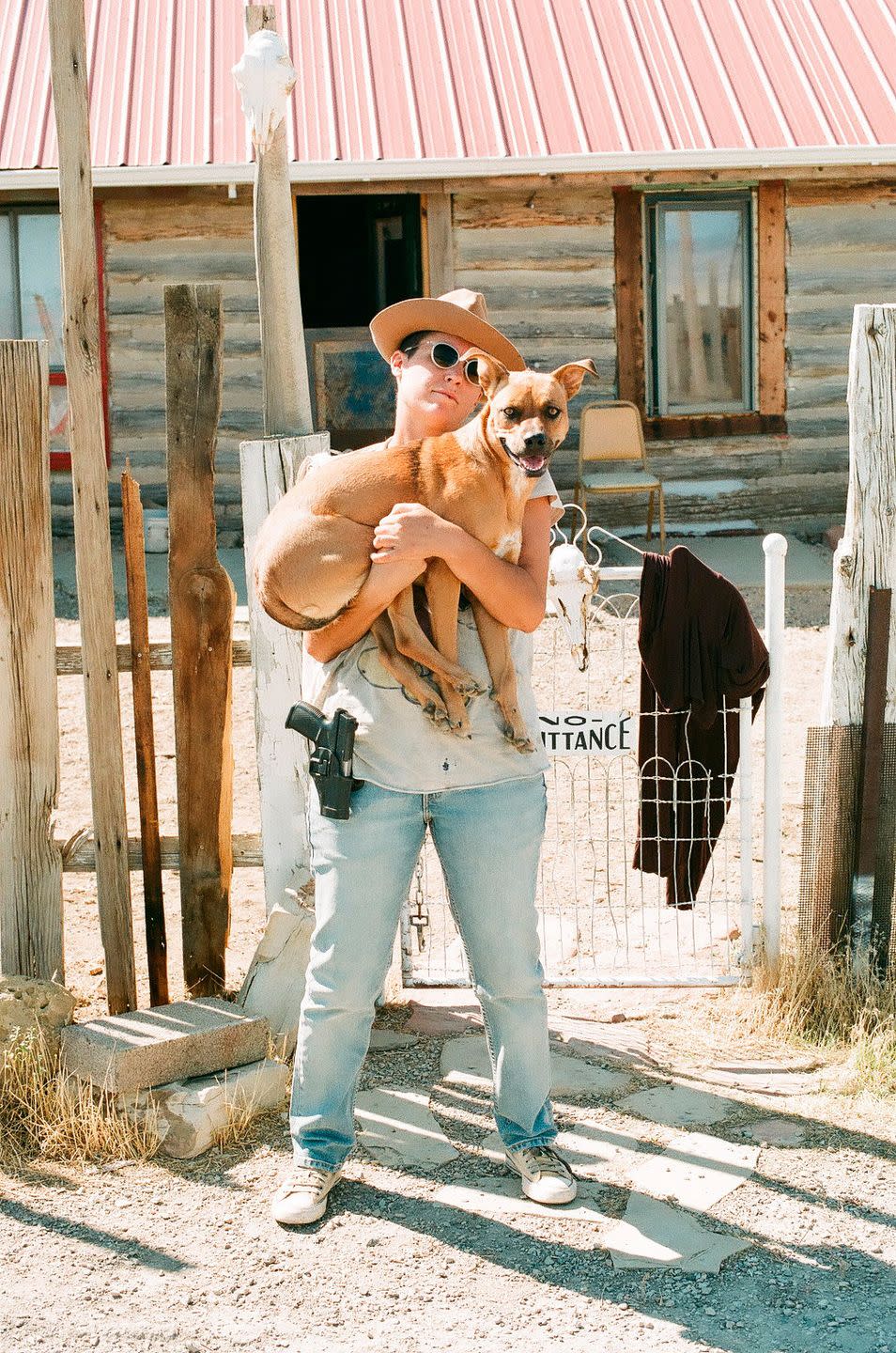
We turned onto a spur trail to see Pine Tree Arch. The arch was massive, looming above the sand and shrubs below. “These shouldn’t be called arches,” Bart said. “They should be called crazy holes.”
“Yeah,” I said. “Crazy Holes National Park.”
My second day in Cisco began in the post office, where I was sleeping, combining my two passions of (a) receiving mail and (b) not being awake. Next to the post office was the outhouse: Cisco has no running water, and no running water means no flush toilets. Instead, with the help of a couple Mormon boys passing through town on their mission, Eileen had dug a huge hole in the ground and built a double-seated toilet above it.
Waste was in your face in Cisco. Unless Eileen had personally cleaned and rebuilt a building or a patch of land, that part of town was covered in trash. I found, among the broken bottles and corroded metal strewn about, a floppy disk. If you are too young to know what that is, I invite you to watch the first Mission: Impossible, an entire film about Tom Cruise doing stunts for a floppy disk.
Out of this wasteland Eileen had built a functional, aesthetically considered town. But make something beautiful and people with a smartphone will find it.
Cisco tourists are usually people who have read about the town on a list of cool places or have seen one of the unauthorized YouTube videos that are always popping up. They park their car somewhere in Cisco and get out, walking all over Eileen’s property, touching stuff and taking pictures. They do this despite the hand-painted signs Eileen has put up around town that say, “Tourists please! Photograph from the road!” and “No drones no trespassing!” and “Take nothing but pictures. Be respectful for fuck’s sake.”
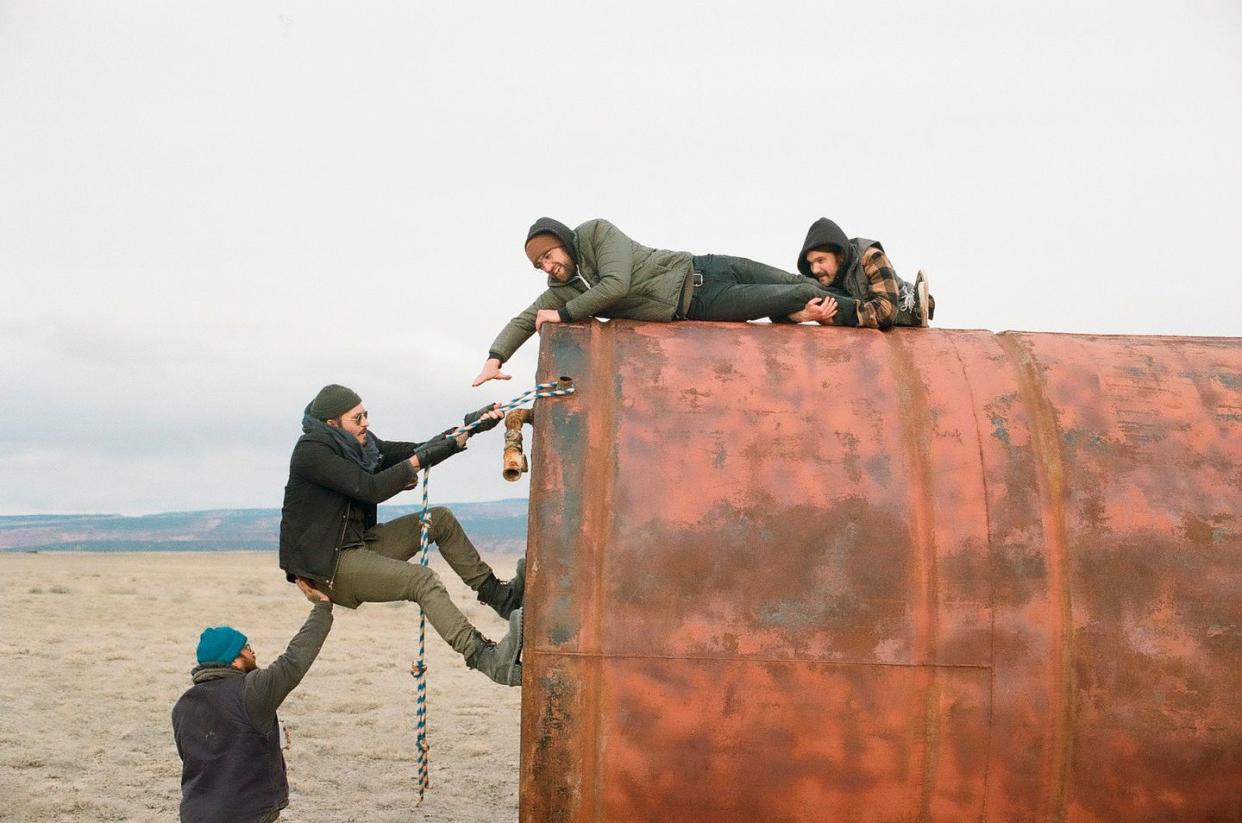
For a while, Eileen tried to monetize this interest. They realized they needed a revenue stream to fund the project of rebuilding the town and the project of “Eileen eating food,” so they rebuilt two collapsing shacks—an old home and the old post office—and listed them on Airbnb. The Airbnbs were a hit with tourists passing through the nearby, wildly popular town of Moab. But the county had recently been giving Eileen trouble about the Airbnbs because you need a permit, and to get a permit you need to be up to modern code. When your restroom is a two-seater outhouse, being up to modern code is never going to happen.
And all too often the people who feel entitled to Cisco cross over from annoying to dangerous. Random men DM creepy messages to Eileen all the time. Once, Eileen was working outside when two men in a parked truck started shooting in their direction. So it makes sense that Eileen carries a gun. It’s a necessity, not a lifestyle statement, unless the statement is “I am going to be difficult to murder.” Eventually, Eileen went around spray-painting “Sorry private house” on abandoned buildings and boarding up any entrances. They told me, “I just want to know where all the hiding places are.”
We spent the day working on the camper. Bart and Eileen cut wood and did serious-
looking things. Emmy sanded the metal sheeting that was serving as the camper’s roof. I asked Bart for an unfuckupable task. “Can you measure the inside of the camper so we can cut insulation?” he asked me.
I spent forty-five minutes measuring and still somehow fucked it up. After that I focused on handing Emmy fresh sanding pads so she didn’t have to get off her ladder.
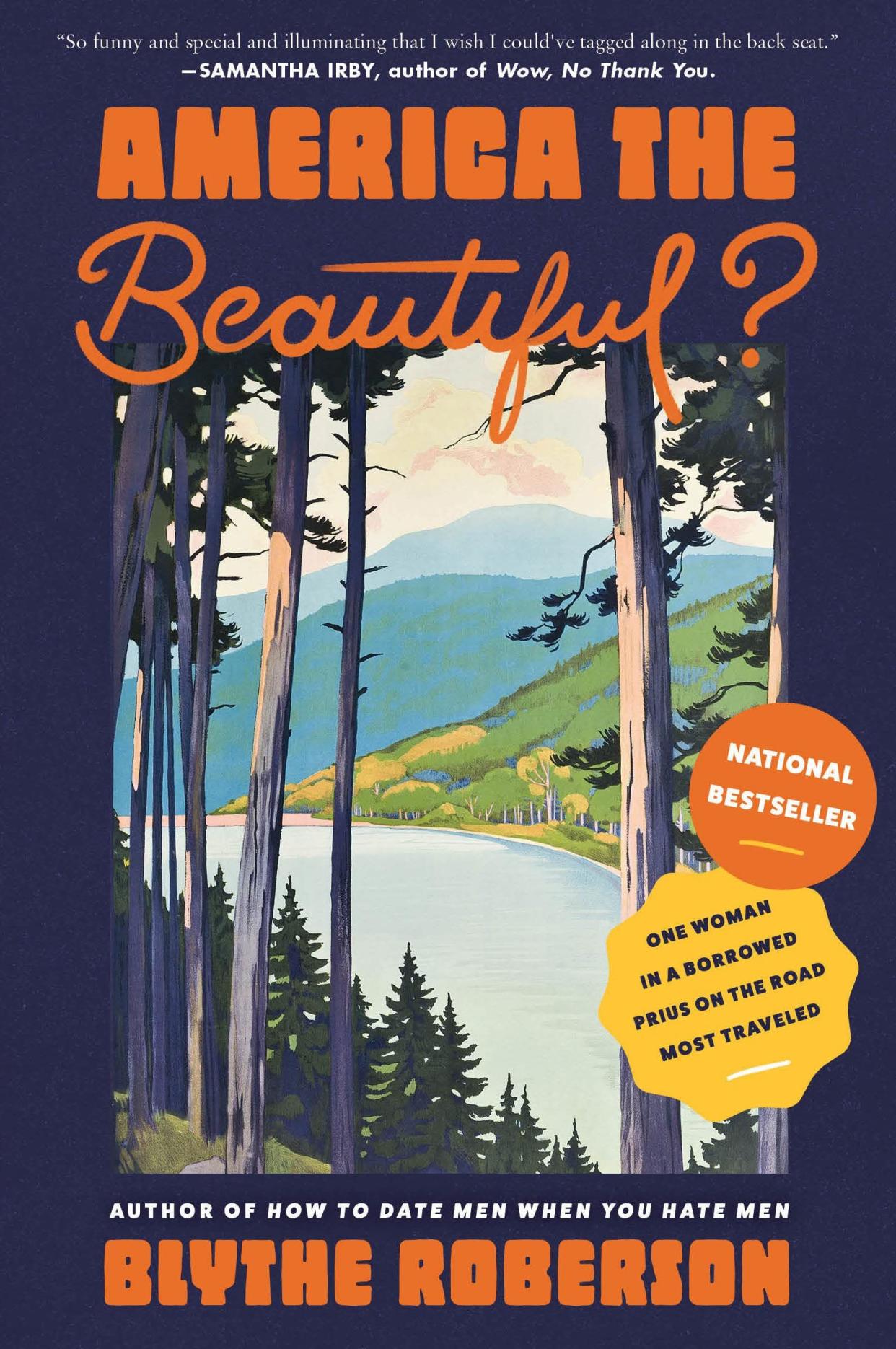
$18.82
amazon.com
Emmy made dinner that night for all of us. We sat around catching up and laughing, talking about what we’d done that day and what needed to be done the next. As I ate out of the one bowl in Cisco, we got to talking about Van Life.
Van Life, or, more accurately, #VanLife, is a movement of people who leave behind the corporate world to live in their vehicles, often built-out vans, usually traveling and posting about it on social media. There are often cute dogs. There are often textiles in vaguely Native American prints. There are often hammocks, and twinkle lights, and conventionally attractive women in Birkenstocks. Van Lifers have managed to take something everyone would love to do—travel, live in beautiful places—and make it extremely annoying. It’s a wealth-washed version of a transient lifestyle other people live out of financial necessity—including many who live and work in Moab, which is in the middle of a housing crisis. Because Van Lifers clog the campsites, service workers who can’t afford housing are forced to sleep in their vehicles farther and farther away.
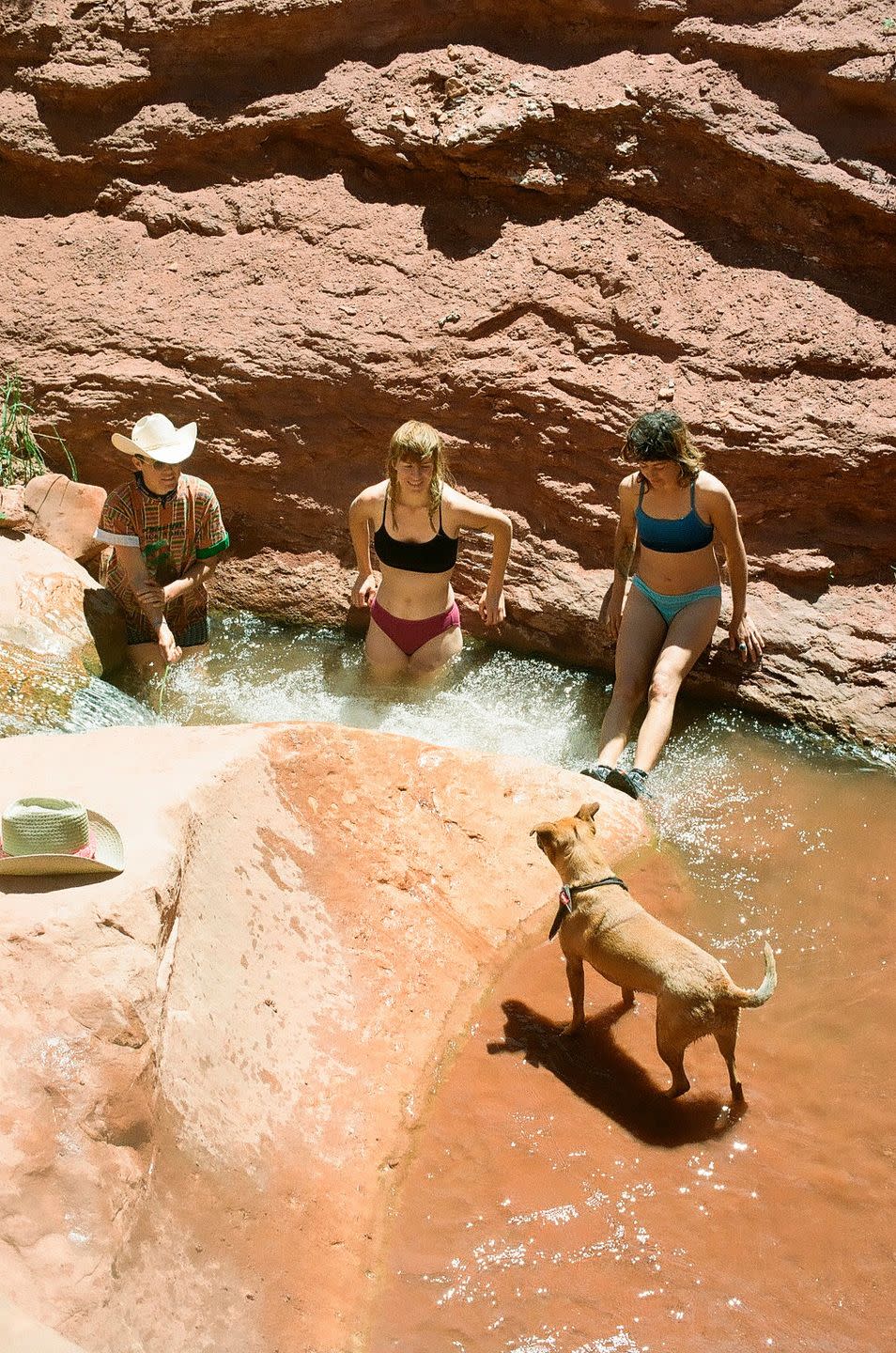
In some ways it echoes what Eileen was doing. Both involve a departure from urban living with a nine-to-five job. Van Lifers take aesthetically pleasing photos and videos for their social media; Eileen was making an aesthetically pleasing town. But a key difference was that Van Lifers were maintaining this alternative lifestyle in the pursuit of making their individual livings from it. They might not have traditional jobs, but being a Van Lifer is its own kind of capitalist grind.
I didn’t see myself as better than Van Lifers. I was driving around the country, hoping to get paid to write a book about it. Sure, I wasn’t trying to become a travel influencer, but how much of that was because I couldn’t aestheticize my travel if my life depended on it? If I knew how to look cute in a photo in a national park instead of looking like I was covered in dirt and hadn’t showered in six days, I would do it.
Eileen, on the other hand, was making no money from the tourists who poked through Cisco every day. Although they put out a donation box and set up a Patreon, they still had to get jobs as a landscaper and at a sawmill to afford to live. Unlike those with the ubiquitous #VanLife accounts, all visiting the same places and taking the same photos, what Eileen was doing feels as far outside the capitalist system as an artist can go while still living in the United States.
We spent the evening sitting in chairs next to the camper, watching Bart spray-paint a cicada onto its roof in the strong beam of a spotlight. Emmy and I were walking to our sleeping quarters when she grabbed my arm. “Look.” We turned around and looked at the stars.
The stars in Cisco were unbelievable. I grew up in a town of six thousand or so people. I didn’t even realize it was possible not to see stars at night until I moved to New York City. Seeing the Milky Way in Utah is enough to make you wonder if you could completely restructure your life in order to see the stars more often.
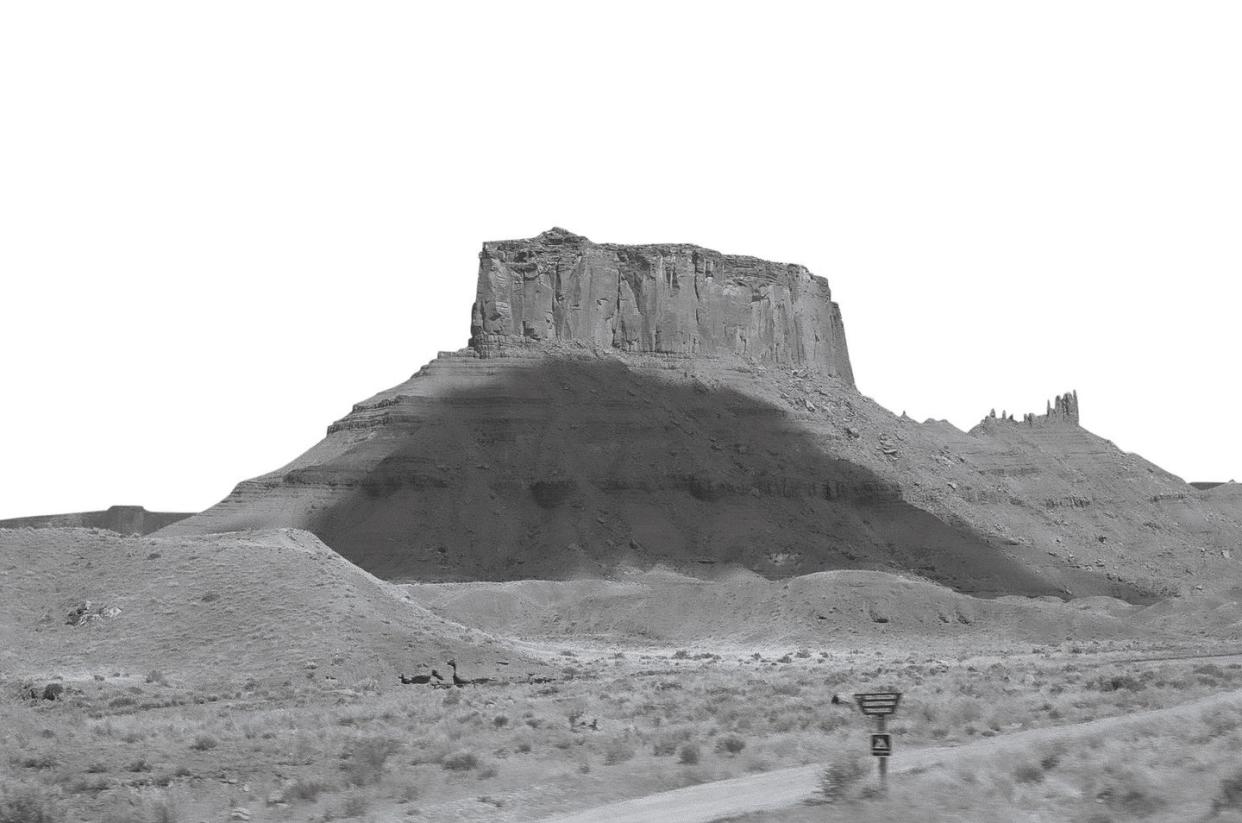
Leaving New York has never been far from my mind. I fantasized about living somewhere I could hike and forage and see the stars but also somehow be surrounded by friends and good restaurants. I clicked through Zillow listings in Moab and Missoula and Seattle and, mostly for climate-change reasons, Duluth. But I was suspicious of how many of my peers appeared to be having the same idea, moving en masse to the West and Southwest, buying vintage trucks and Yeti coolers. Even those friends who stayed in New York appeared to be taking the Metro-North to the same cute upstate towns and hiking the same trails and posing at the same overlooks. What seems to me like my generation’s craving to experience the nature we still have and to escape the capitalist system is being aestheticized and sold right back to us.
I had been on the road for three weeks. I had seen beautiful places that I’d always wanted to see; I’d hiked up cliffs and walked in desert streams and seen all of America spread out below me from the top of a very tall South Dakota hill. I felt free in a way I couldn’t remember ever feeling. But the more I thought about it, and the more I ran into people who had done the same things, the more I realized I was following grooves set out for me by our culture. When I thought about leaving New York, I was thinking along similar grooves. Was I free, really, or was I performing what our culture presents as freedom? Was anything I was doing even slightly meaningful?
On the other hand, did I really need to reinvent vacation?
My fourth day in Cisco was my last. We got as cleaned up as you can in a town without showers and piled into cars for a trip into Moab. We crammed into a booth at the restaurant where J. worked, then wandered down the main street to grab ice cream, trying to stretch out the evening.
By a long shot, this had been the best part of my trip so far. I was with friends, laughing and telling stories and getting to experience things with them. I was staying in one place and helping, in my own not-very-good-at-construction way, to build something, instead of showing up somewhere, taking a picture, and rolling out—basically taking a survey course of America. What was most special was seeing what Eileen was doing and feeling like a small part of Cisco.
Eileen always intended for other people to come to Cisco, for friends and family to visit. Cisco drew people not because it had spectacular views or amenities but for the opposite reason: It was a place ravaged by industry and left for dead yet being reborn. It was a race against time, Eileen said. “I’m watching the Southwest dry up and burn down and blow away.” But as great as the buildings and campers and composting outhouses were, the Cisco community was the greatest thing Eileen had built. To me, Cisco looked like the best way I’d yet seen to be as free as you could, to live somewhere where every view was gorgeous but also to have that thing humans need on a biological level: the company of friends.
Adapted from America the Beautiful? Copyright © 2023 by Blythe Roberson. Reprinted here with permission from Harper Perennial, an imprint of HarperCollins Publishers.
You Might Also Like